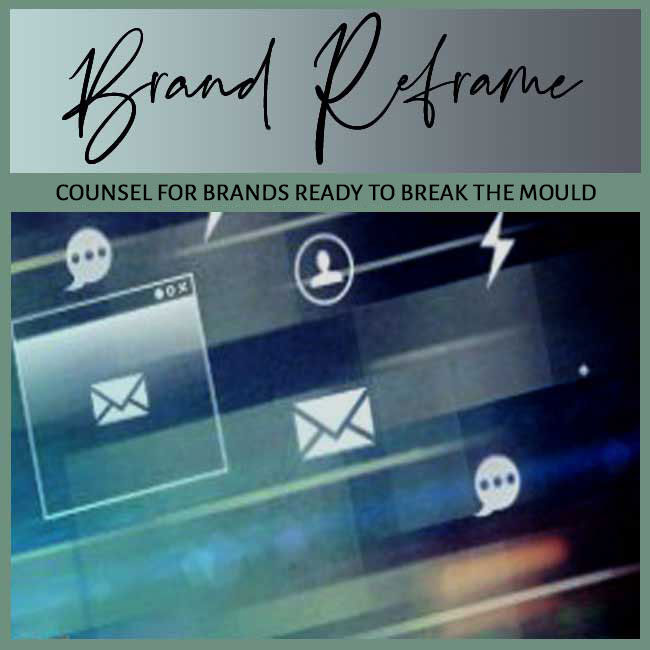
FOCUS: BRAND FOUNDER MISFIT | AUDIENCE: INVESTORS IN SLUGGISH BRANDS
BY: SHOBHA PONNAPPA | BRAND BREAKTHROUGH STRATEGIST | 45 YEARS | 125+ CLIENTS
I answer 6 tough questions about why founder networks can become both a springboard and a ceiling for brand growth.
I often meet investor-backed companies that stall once the founder’s initial network has been tapped. Early sales come quickly, fuelled by warm contacts, alumni circles, or industry peers. But then growth flattens, because the brand hasn’t yet proved itself beyond that circle. Networks give comfort, but also create ceilings. In this post, I tackle six common questions about what to do when networks limit the brand’s true potential.
In the early stages, networks provide immediate validation. Founders turn to trusted contacts for first customers, testimonials, or funding. These connections create momentum and reduce early risk. The problem arises when network traction is mistaken for market traction. What worked as a launch pad is often mistaken for proof of broad demand.
I have seen founders grow overconfident from warm responses within their circle. Internal applause hides external indifference. When they try to scale beyond familiar ground, the brand lacks the clarity and positioning to win cold markets. This is where growth begins to stall, frustrating both founders and investors.
The signals show up in sales and pipeline health. Conversion rates within the founder’s circle remain strong, but numbers collapse once outreach extends beyond that group. Customer diversity remains narrow. If the same types of clients, geographies, or industries repeat without expanding, it’s a clear sign the brand has not crossed into wider acceptance.
I advise investors to watch for over-reliance on personal referrals and introductions. A flat pipeline signals dependence. Without clear strategies for cold acquisition, brand visibility, or new segment entry, the business plateaus quickly, no matter how strong the founder’s charisma.
Investor-backed brands need scalability. If growth is locked within the founder’s circle, returns are capped. Worse, a single reputational issue in that circle can ripple across the entire customer base. Concentration risk becomes severe. Brands tied too tightly to networks fail to de-risk their growth.
I have counselled investors who realised too late that their portfolio company had built no real brand equity outside of founder relationships. Without brand independence, multiples shrink. A brand that cannot thrive without introductions will not attract strong acquisition or IPO interest.
Many founders pride themselves on being the ultimate salesperson. They enjoy networking, relationship-building, and being the face of the company. This creates strong early momentum, but it also conditions the business to depend on founder charisma. Without the founder in the room, deals don’t close.
This is a classic brand founder misfit. The brand cannot detach from the founder’s identity. Investors face risk because the business feels unscalable and untransferable. For growth, the founder must shift from being the brand’s voice to enabling the brand’s voice.
The first step is codifying the brand’s narrative into clear, repeatable assets. Sales decks, case studies, and positioning tools need to work without the founder present. Repeatable systems replace personal pitches. This transition helps the brand scale into colder, wider markets.
The second step is diversifying acquisition channels. Investing in inbound content, digital marketing, and strategic partnerships spreads reach beyond personal ties. Market traction requires systems, not just circles. Once the brand story works outside the network, the business can finally break its ceiling.
Investors should test for market reach during diligence. Look beyond revenue numbers … analyse how many deals came directly from the founder’s introductions. If the percentage is high, network dependence is likely. True resilience comes from brand-led demand.
I encourage investors to push portfolio companies towards clarity, codification, and scalable systems early. Brands that detach from networks grow faster. Those that don’t remain trapped, vulnerable to both plateau and reputational risk.
If these questions resonate, your brand may not be broken, but it is limited. Founder networks provide momentum, not scalability. The good news is that one strategic reset in storytelling and acquisition can shift growth from dependence to independence. The moment a brand story travels beyond warm contacts is the moment real value begins to multiply.
If you’re brand owner or manager seeking stronger brand performance, this FAQ Insight Post I wrote could interest you: “FAQs: When Your Brand Story Feels Great but Also Unbelievable.“
And if you’re a solo expert looking to sharpen traction, this FAQ Insight Post I worked on may resonate: “FAQs: When Prospects Keep Misinterpreting Your Brand’s Offer.“

"One BIG IDEA can turn brand stagnation into unstoppable movement. Spots are limited each week ... book your breakthrough session now."
Shobha Ponnappa
More Breakthrough Ideas … Case Studies & FAQs … from the Brand Founder Misfit Category
Case Studies
FAQ Insights
Smart insights, real-world frameworks, and idea-driven clarity – designed to help brands move.
Get my fortnightly Brand Reframe newsletter. Smart insights, distilled thinking, and focused momentum to help your brand lead.

Get my free AI strategy guide. Smart prompts, sharper briefs, and practical ways to make AI support your brand momentum.

Just fill in the form to join. Get my newsletter and the guide shown alongside, all with several game-changing tips.